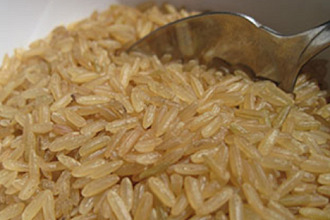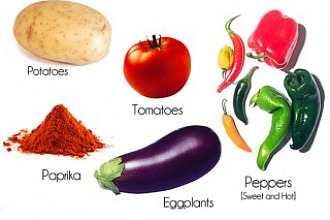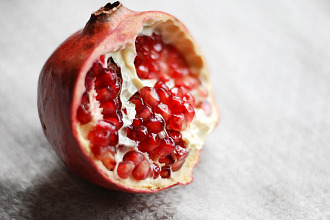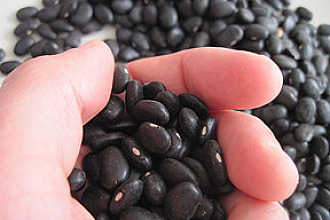Thirty-five years ago, I had the privilege of attending Loma Linda University School of Health to complete my doctoral studies in preventive care. I learned then that the top three chronic diseases affecting Americans include heart disease, stroke, and cancer. That pattern is still true today. However, one current, chronic disease now number five on the list was a no show three decades ago—diabetes. According to Edward Gregg, chief of the Epidemiology and Statistics Branch of Diabetes Translation at the Centers of Disease Control and Prevention (CDC), there are approximately 29 million American adults with diabetes, and most have Type 2, the kind that is mainly associated with obesity (as compared to Type 1, an autoimmune disease).
Known as adult-onset diabetes, Type 2 is now showing up in a growing number of teens. Often termed a silent disease, CDC estimates that about 28 percent of adults with diabetes are unaware of it. Obesity and age are important risk factors. About 25 percent of individuals who are 65 and older have diabetes.1 In a 2010 CDC report, every 24 hours more than 4,000 adults are diagnosed with diabetes and 200 individuals die from it.2
Cut the Fat, Up the Fiber
Dr. George King, leading diabetes researcher, says that an ideal diabetic prevention diet should consist of 15 percent fat, 15 percent protein, and 70 percent complex carbohydrates from vegetables, fruits, nuts, and whole grains.3 Based on its 18-year epidemiological study of over 71,000 women, Tufts University revealed that green leafy vegetables reduce the risk of developing Type 2 diabetes in women by 9 percent.4 Whole grains are rich in fiber and magnesium. According to previous research, legumes like beans, peas, and lentils are high in fiber and they assist in fighting heart disease by improving cholesterol (grams of fiber in every ½ cup: kidney beans - 8.2, black - 7.5, pinto - 7.4, chickpeas or garbanzo - 6.2, and lima beans - 4.9). A variety of canned cooked beans are available in supermarkets. They are delicious on toasts and salads and can be served as entrées. Self-prepared beans are the best and cost much less. Set your goal of fiber intake every day—40 grams for men and 30 grams for women. A simple sandwich at lunchtime can easily help you reach that goal. Two slices of double fiber whole grain bread with crunchy peanut butter and half an avocado have about 25 grams of fiber.
Keep Moving
In his compelling book, Goodbye Diabetes, Wes Youngberg tells the story of his patient, Michael. Arriving late to one of Dr. Youngberg's lectures, Michael had a challenge finding a seat because he was using a walker. Youngberg thought that if anyone has an excuse not to exercise—it's this guy, as he can barely make it across the room. Later, Youngberg saw him personally and reviewed his lab results. Michael's baseline showed a fasting glucose of 278; hemoglobin A1c - 10.8%; cholesterol - 230; triglycerides - 166; blood pressure - 150/100 (with medications); weight - 230 pounds. After three-and-a-half weeks, Michael again consulted with Dr. Youngberg, with these impressive results: fasting glucose - 90; hemoglobin A1c - 8.2%; cholesterol - 157; triglycerides - 102; blood pressure - 120/90 (with medications); weight - 221 pounds.
Youngberg was amazed at Michael's remarkable progress in such a short period of time but Michael was not surprised, saying, "I just did what you told me to do and that was to exercise and walk for half an hour after every meal." Over the next several months, Michael continued to improve dramatically until he no longer fit the diagnosable criteria of diabetes and his hemoglobin A1C had dropped to 5.7 percent.
Physical activity is one of the most effective strategies to control diabetes. Dr. Youngberg has found that his patients can reduce their blood sugar spikes by 1 to 3 points for every minute of light exercise immediately following a meal. (Remember if you wait an hour after a meal your blood sugar and insulin have already spiked.)5 A clinical trial by Dr. DiPietro and her colleagues found that the daily routine of three short walks (15 minutes after meals) lowered patients' A1c to 6.5 percent instead of 7.1 on the days they didn't walk. According to DiPietro, the added advantage is—"If you can consistently walk briskly for 45 minutes to an hour, it will train your muscles to clear glucose more efficiently."6 Blood glucose levels were 30 percent lower when exercising after eating as compared to only 18 percent before eating. According to the Diabetes Prevention Program research study, walking as little as 17 minutes per day can reduce by 58 percent your chance of developing diabetes.7
New Vitamin & Mineral Fighters
Vitamin D plus calcium offers powerful protection. In a 20-year study of over 83,000 women at Tufts New England Medical Center, those women who included 800 IU of Vitamin D and 1,200 mg of calcium in their diet lowered their risk of Type 2 diabetes by 33 percent.8 Dr. Pittas found that 92 percent of overweight adults, when 2,000 IU of vitamin D was included in a 10 week study, showed a 26 percent improvement in the beta cells of the pancreas that produce insulin.9 Studies show that higher magnesium intake can improve insulin sensitivity. Including magnesium-rich food in your diet is important for managing your blood sugar.
Cautionary Info on Coffee & Red Meat
Recent studies indicate that coffee may reduce the risk of Type 2 diabetes but researchers are not sure why that is. Dr. Manson of Brigham and Women's Hospital in Boston states, "If you think getting a large frappuccino is the way to go then think twice, because all those extra calories loaded with sugar are not going to reduce the risk of diabetes. He also added that, "Red meat and particularly processed meats like luncheon meats—have been pretty consistently linked to an increased risk of diabetes."
You may or may not currently have diabetes, but following a lifestyle of a good nutritional diet, lots of physical activities, reduced stress, and adequate sleep will help to keep this and other chronic diseases from being part of your life. Definitely, being stewards of our health can be the best approach to living a fruitful life and maintaining a wholistic lifestyle.
References:
1, 9, 11Nutrition Action, “Tip of the Iceberg,” July/August 2014, pp. 3, 6, & 7.
2Victoria Retelny, “The Power of Diet to Prevent Diabetes,” Environmental Nutrition, August 2010, p. 6.
3George King, M.D., “New Ways to Beat Diabetes,” AARP The Magazine, 2014, p. 24.
4Tufts University Health & Nutrition Letter, “Enlist Fruits and Green Veggies,” September, 2008, p. 8.
5Wes Youngberg with Elise Harboldt, Goodbye Diabetes, Hart Books, 2012, pp. 181-183.
6Stephan RIPICH, “30 Day Diabetes Cure,” BottomLine Magazine, June 15, 2011, pp. 1, 2.
7Journal of Applied Physiology, published online Feb 17, 2015.
8New Diabetes Fighters-SNH. 10American Journal of Clinical Nutrition 99:268, 2014.


























